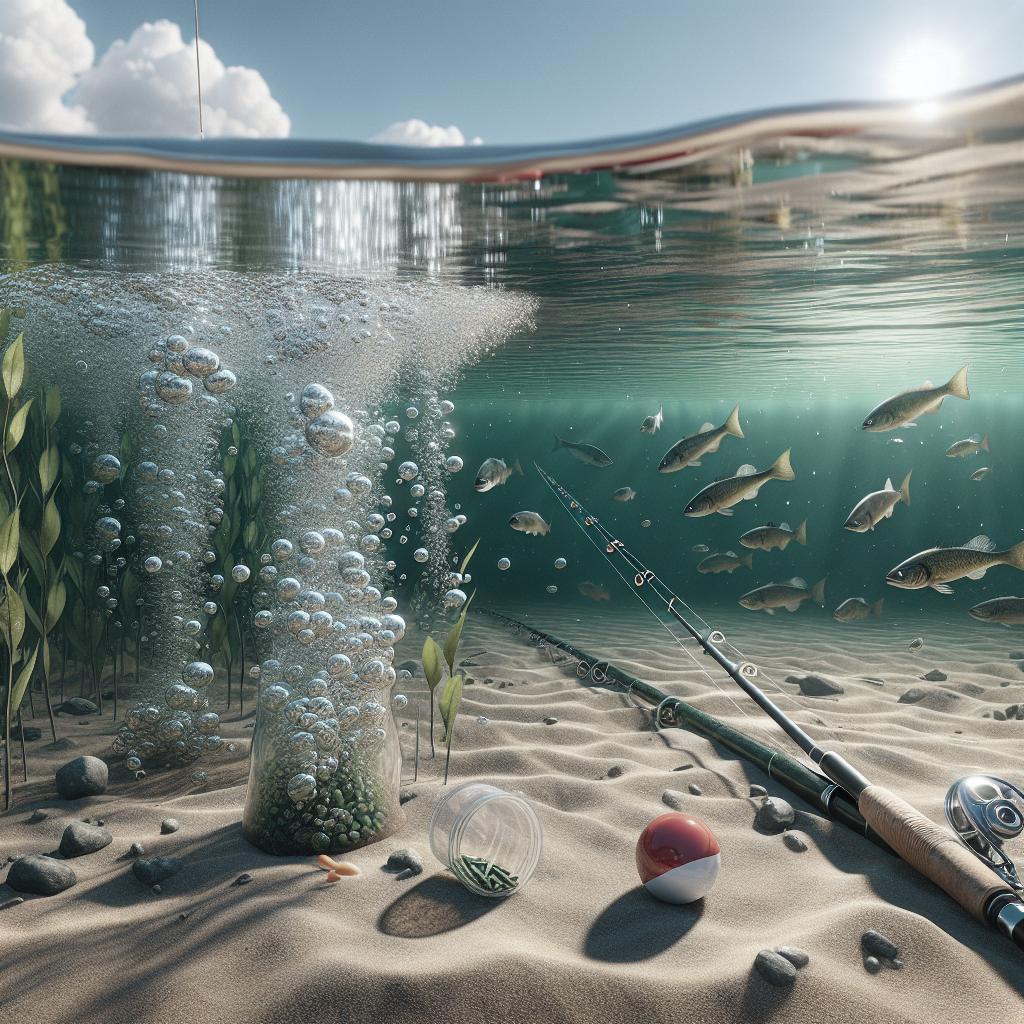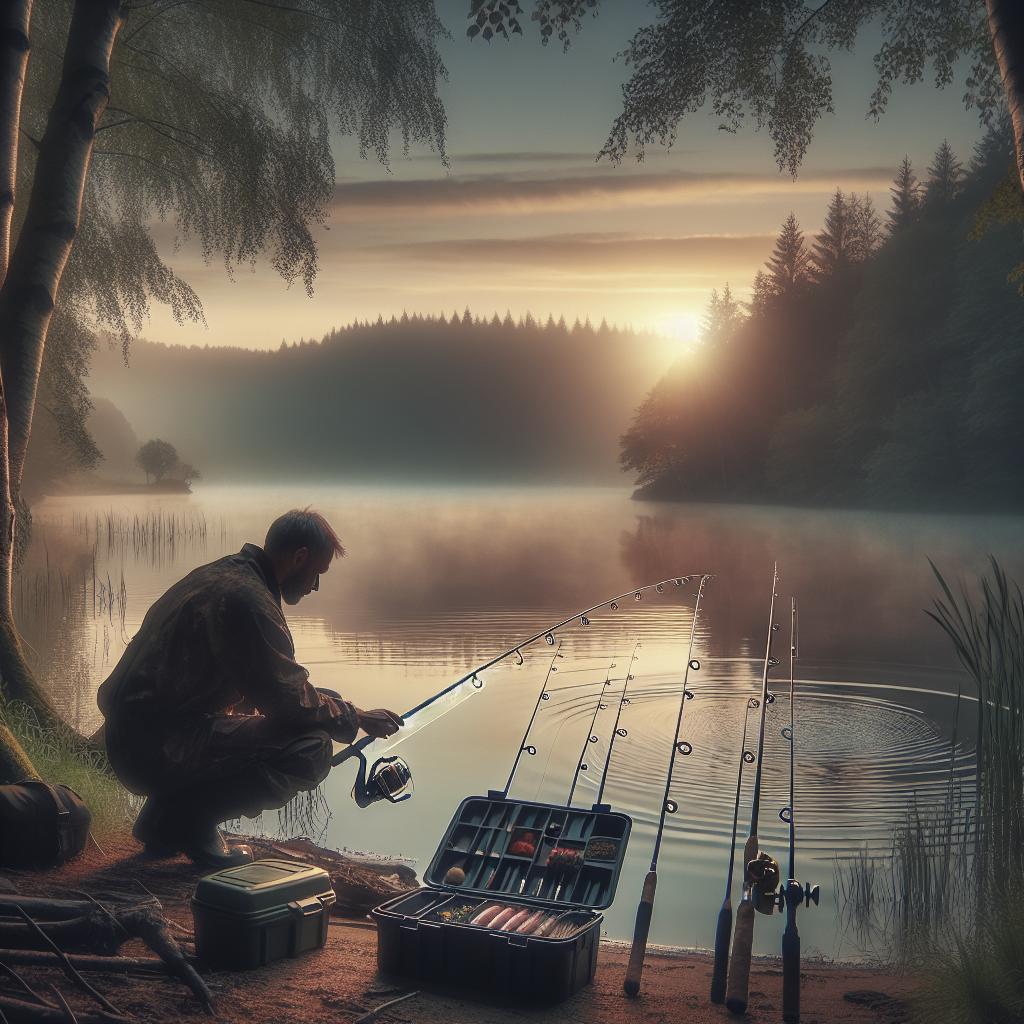“`html
Signs of Fish in the Area
Introduction
Observing the signs of fish in a specific location can significantly enhance your fishing experience. Whether you’re a casual angler or a dedicated fisher, understanding the indicators of fish presence is invaluable. This blog post delves into various factors including oxygen-related fish kills, pesticide poisoning, and disease outbreaks that can signal fish presence and health in a water body. Additionally, it offers preventive measures to maintain aquatic life while preserving your favorite fishing spots. We conclude with additional resources to enhance your fishing skills, from considering color strategies to utilizing advanced tools. Dive into this comprehensive guide to become adept at identifying and understanding the signs of fish in your desired fishing location.
Oxygen-Related Fish Kills
Summer Fish Kills
During the hot summer months, the possibility of oxygen-related fish kills increases significantly. Warm water holds less dissolved oxygen, a vital component for aquatic life survival. When temperatures rise, fish tend to use more oxygen due to increased metabolic rates, potentially resulting in a deficit. Areas with stagnant water, such as ponds and slow-moving streams, are particularly susceptible. Observing fish gasping at the water’s surface is a clear sign of oxygen depletion.
Another contributing factor is excessive algae growth, which thrives in warm conditions but consumes oxygen after dark during respiration. This nighttime depletion can lead to fish kills. Anglers should be aware of the water’s appearance; dense algae blooms creating murky or discolored water can forewarn an impending fish kill.
Winter Fish Kills
Winter brings its own set of oxygen-related challenges. Ice-covered water bodies can act as a barrier, reducing gas exchange between air and water. Snow-covered ice aggravates this by limiting sunlight penetration, affecting photosynthesis and further depleting oxygen.
Fish kills in winter are often noticed when dead fish are found floating beneath the ice or on the shoreline during a thaw. Maintaining air holes or installing aeration systems can help prevent these occurrences, ensuring sufficient oxygen levels for underwater life.
Preventing Oxygen-Related Fish Kills
Preventing Summer Fish Kills
To mitigate summer fish kills, it’s essential to maintain balance within the aquatic ecosystem. Managing nutrients that contribute to excessive algae growth is a crucial step. Using environmentally friendly practices such as buffer strips and minimizing fertilizer use can help.
Installing aeration systems can also be beneficial. These systems effectively increase oxygen levels by promoting water movement, ensuring fish have access to ample oxygen during warmer periods. Understanding and adjusting to the natural rhythms of your fishing location can preserve fish health.
Preventing Winter Fish Kills
Winter fish kill prevention involves ensuring that ice-covered water bodies receive enough air. Incorporating aerators, which maintain open patches in the ice, is an efficient way to facilitate gas exchange. Regular monitoring of ice and snow buildup can avert oxygen depletion consequences.
Additionally, educating the local fishing community about these preventive measures can encourage collective responsibility. By being proactive, anglers can help maintain healthy fisheries even during harsh winter conditions.
Fish Kills Due To Pesticide Poisoning
Pesticides, though beneficial in agriculture, can pose significant threats to aquatic environments when introduced into water systems. Fish kills resulting from pesticide toxicity are usually rapid and widespread, often indicated by a sudden lack of aquatic life.
Symptoms of pesticide poisoning in fish include disequilibrium, swimming at the surface, or unusual behavior. If pesticides are suspected, it’s critical to assess adjacent land use and agricultural activities that could have led to contamination.
What To Do If You Suspect a Pesticide-Related Fish Kill
If you suspect that a fish kill is pesticide-related, immediate action should be taken. It’s important to document the situation with photographs and notes, then report the incident to local environmental authorities for investigation.
Avoiding water contact during a confirmed pesticide event is vital for safety. Notifying local fishing and environmental groups can lead to a swift communal response, minimizing further impact on the ecosystem.
Preventing Pesticide-Related Fish Kills
Preventive measures begin with responsible pesticide application and management. Farmers and landowners can minimize runoff by implementing buffer zones and integrated pest management practices to reduce dependency on harmful chemicals.
Educating communities on the impact of pesticides on aquatic life can foster informed decisions, leading to a cooperative effort to protect local water bodies and their inhabitants.
Fish Kills Caused By Disease
Disease outbreaks within fish populations can lead to significant kills, often exacerbated by stress factors like sudden temperature changes or pollution. Observing abnormal behavior or visible lesions on fish can indicate the presence of disease.
Maintaining water quality and supporting natural habitats are effective ways to strengthen fish resilience against diseases. Regularly monitoring fish health and promoting diversification of aquatic species can mitigate the spread of infections.
Summary
| Category | Key Points |
|---|---|
| Oxygen-Related Fish Kills | Summer kills due to warm water, algae blooms; Winter kills from ice cover, low sunlight. |
| Prevention | Manage nutrients, use aeration systems; prevent ice cover with aerators. |
| Pesticide Poisoning | Sudden kills from pesticides; affects fish behavior. |
| Pesticide Prevention | Responsible pesticide use; community education. |
| Disease | Outbreaks due to stress or pollution; maintains water quality. |
For Further Reading
Consider Color for More Fishing Success
Exploring the use of color in lures and bait can enhance your fishing effectiveness. Understanding how factors like water color and light conditions influence fish attraction can help refine your strategy.
Today’s Tools for Ice-Fishing Success
Advancements in ice-fishing technology have revolutionized the sport. From electronic fish finders to insulated shelters, modern tools provide comfort and efficiency. Staying updated with these tools can improve your ice-fishing experience.
Green Bay Walleye Fishing
Known for its abundant walleye population, Green Bay offers anglers exceptional fishing opportunities. Familiarize yourself with local regulations and seasonal patterns to maximize your catch in this prized fishing destination.
“`


